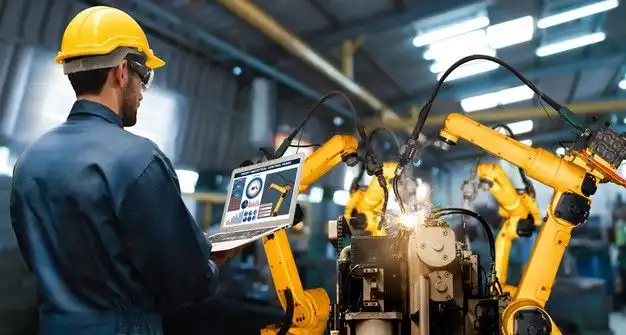The Role of CNC in India’s “Make in India” & Atmanirbhar Bharat Initiatives
Introduction India is rapidly emerging as a global manufacturing powerhouse, with the Make in India and Atmanirbhar Bharat initiatives driving domestic production and technological self-reliance. CNC machining is at the heart of this transformation, enabling high-precision manufacturing, automation, and cost-efficient production across industries like aerospace, defense, automotive, and heavy engineering.

- CNC Machining & The Make in India Vision The Make in India initiative encourages companies to set up local manufacturing units, reducing dependence on imports and boosting domestic industrial growth. CNC machines play a crucial role in achieving this goal by:
- Enhancing Local Manufacturing Capabilities – CNC automation increases production efficiency, enabling Indian manufacturers to compete globally.
- Improving Product Quality & Precision – Advanced CNC machining ensures world-class quality standards for export-driven industries.
- Reducing Import Dependency – High-precision CNC machines enable the local production of complex components, decreasing reliance on foreign suppliers.

- Atmanirbhar Bharat: CNC’s Role in India’s Self-Reliance The Atmanirbhar Bharat (Self-Reliant India) initiative focuses on building a robust indigenous manufacturing ecosystem. CNC machining aligns with this vision by:
- Enabling Aerospace & Defense Manufacturing – India is localizing defense production with CNC-made critical components for fighter jets, missiles, and submarines.
- Supporting Automotive & EV Growth – CNC machining ensures precision-engineered parts for India’s booming electric vehicle (EV) and automobile sector.
- Empowering MSMEs with CNC Technology – Small and medium enterprises (SMEs) can leverage CNC automation for faster production and better scalability.

- Government Incentives for CNC Adoption The Indian government is actively promoting CNC technology adoption through various subsidies and policies:
- Production-Linked Incentive (PLI) Schemes – Encouraging CNC-based manufacturing in key sectors like electronics, automotive, and defense.
- Import Duty Reductions on CNC Components – Making CNC technology more accessible to Indian manufacturers.
- Skill Development Programs – Training engineers and machinists in advanced CNC machining to bridge the skill gap.
- The Future of CNC Manufacturing in India With rapid industrial growth, India is on track to become a global CNC hub, competing with manufacturing giants like China and Germany. Future trends include:
- Smart CNC Factories – IoT-enabled machines, AI-driven predictive maintenance, and real-time production monitoring.
- Sustainable CNC Practices – Energy-efficient motors, chip recycling, and eco-friendly machining techniques reducing carbon footprints.

- Growth of Multi-Axis & Hybrid CNC Machines – Faster, more efficient, and precise manufacturing for complex industrial applications.
Conclusion CNC machining is the backbone of Make in India and Atmanirbhar Bharat, driving India's self-reliance and global competitiveness. By embracing advanced CNC technologies, automation, and smart manufacturing, Indian industries are set to revolutionize the manufacturing landscape.
- Sahil Machines is at the forefront of this transformation, offering high-precision CNC solutions tailored for India’s growing industrial sector.
- Visit us: www.sahilcnc.com
- Inquiries: info@sahilcnc.com
- Follow Sahil Machines for CNC industry updates and insights!



































Get in touch with us about anything.
Connect with our team to explore the alloy solutions and machinery expertise you need.

